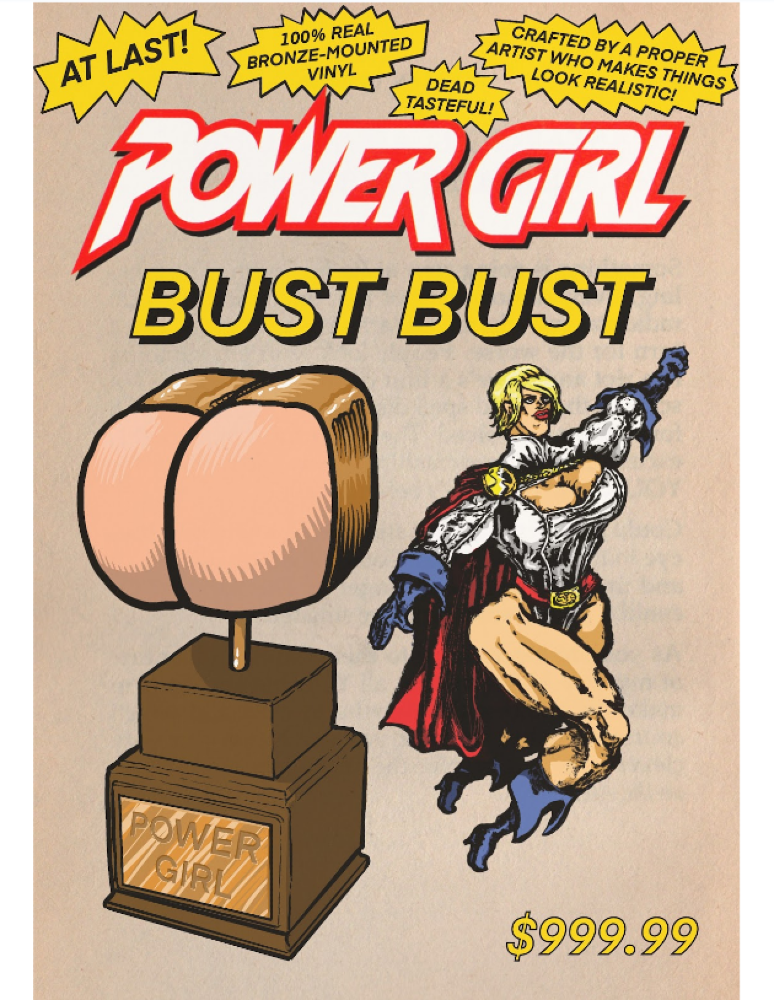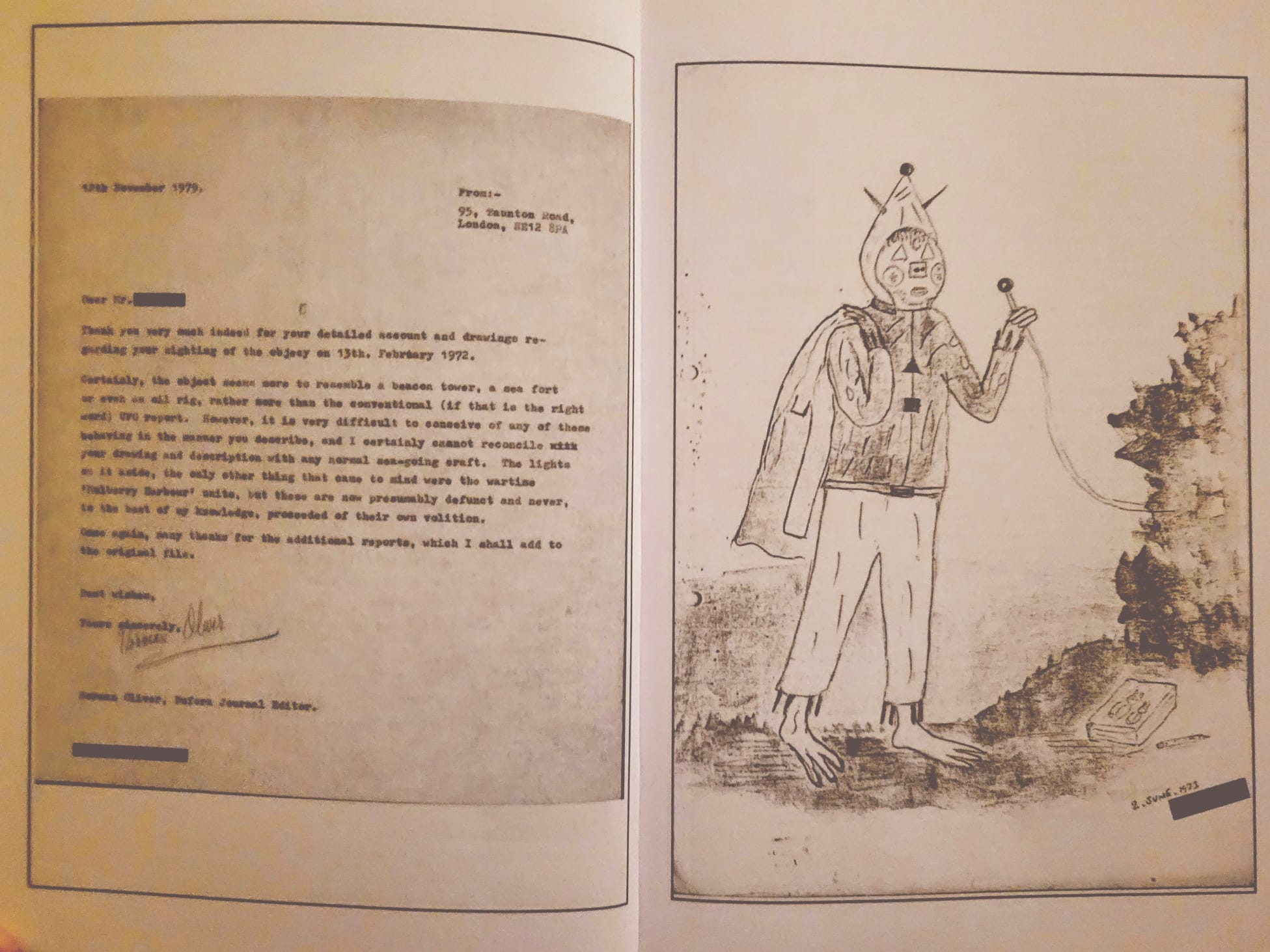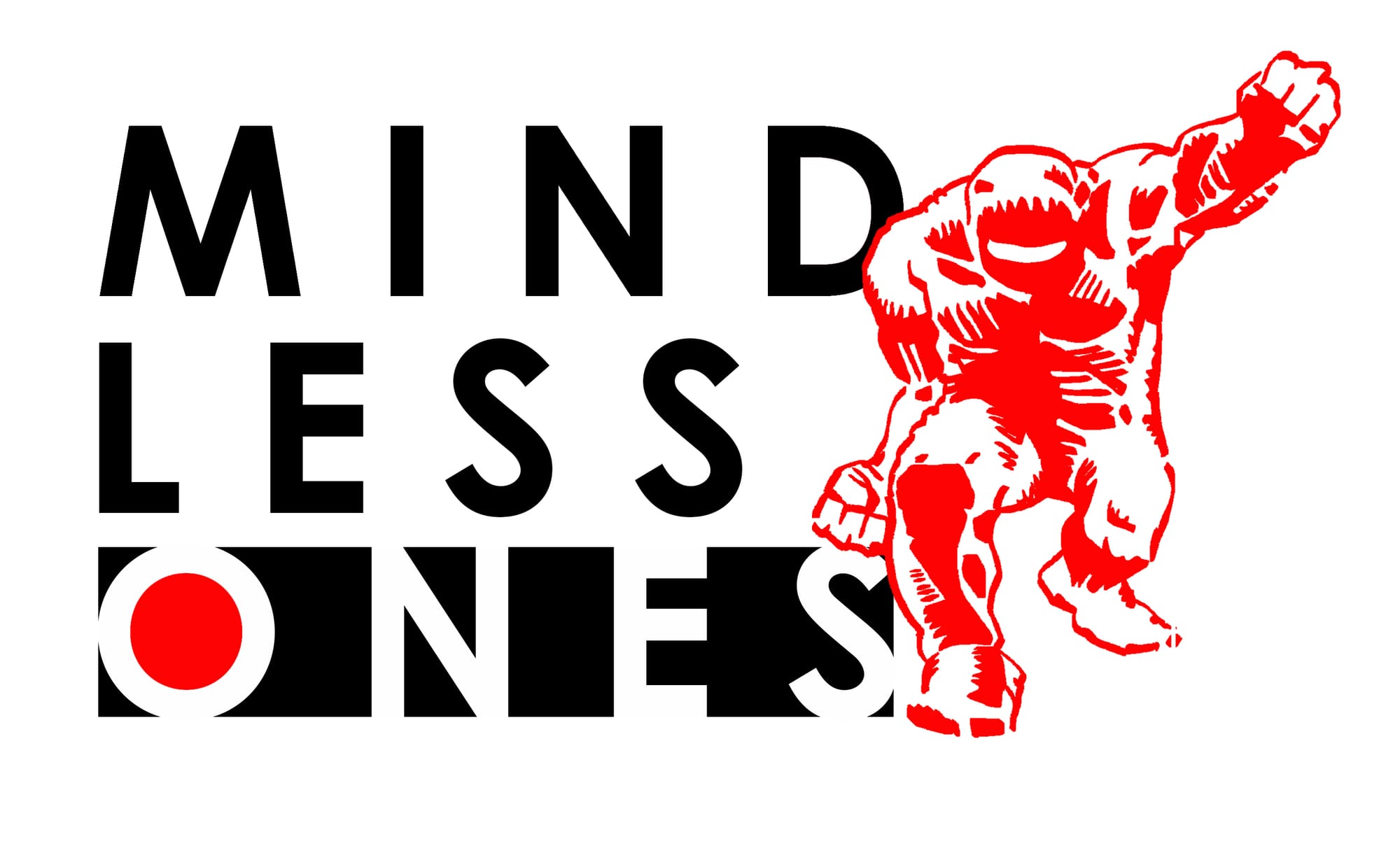Call me Mindless Ones
Luda. St Etienne. Bust bust. New Statesmen. The Isle of Wight Entity Case. The Night Flier. Playboi Carti. Andrew & Steven. Blood & Thunder.
ITEM
MINDLESS EXPLORATION - Gasglow/Glasgow, Luda (Grant Morrison, 2023)
It’s not a new idea, really. You take the shite of the day, dress it up in wigs, rubber and sparkles, and hope that makes it all feel grand or funny enough to live with. As with life, so too with a city – in Luda, we visit Gasglow in place of Glasgow, a glittering shadow city with “a plateau where the Gorbals is, with a strange modernist shopping centre.”
In a city like Glasgow – where people die early and properties are burnt down on schedule, but where the right turn could point you towards a bigger world – there’s scope for someone with enough ”patter” to imagine new possibilities in the gaps. The solidity of Gasglow makes sense in this warm west light; the street name attached to the interzone changes, but its presence is constant.
It follows that Gasglow would be haunted by continuities with its near namesake. Luda contains a map of the city that is not the city, but your guides will have you seeing bits of territory popping up through the surface like inopportune erections. Does the image of a “pantomime cow cackling on cocaine” make more sense in Gasglow or Glasgow? What about the story of Dali travelling to town to touch up his damaged Christ? Or the “inadvertent surrealist dogfight” between a biplane and a whale?
It’s a potent state to exist in, lit up by sly jokes and shifting glamour, but the sustained performance in this novel offers both a promise and a warning. Whose dreams are being written into the fabric of the city, and to what ends? Pause the story. Take a deep breath. Remember where you are, what city it is you live in, whether you really know Andy Warhol. Now. Look behind you.
ITEM
SELECTIVE MEMORIES
St Etienne – Mario’s Café
https://youtu.be/lCQSolojNKs?feature=shared
We all fell in love with Sarah at the exact same point, lightly buzzing from the mushrooms we had taken, as they performed ‘You’re In a Bad Way’ on The Word.
‘Mario’s Café’ from their second album is a perfect prism of everything to love about the band. A charity-shop, dream-pop confection, detailing an everything/nothing day spent drifting around early 90s Camden, ethereally narrated by Sarah.
When I first heard the song on a second-generation TDK 90, I misheard the chorus lyrics as “When we meet for Tuesday morning tennis”, as opposed to “Tuesday morning 10am”. And it didn’t matter. This tap-dancing between the high and low life, is what made St Etienne such essential chroniclers of a specific feeling, a specific moment, of bubbling, bumbling 20-something existence. Heroic, frustrated potential and dreams at the bus stop. Why not tennis?
Time-locked lyrics of watching Chris Eubank box, and the KLF on telly, rub up against the slinky, chiming electronic warmth of the tune like a cat against your shins. The right kind of nostalgia, unafraid of the future.
You shouldn’t trust critics who turn into pop stars, but Bob and Pete understand in their bones what makes perfect pop tick. Blissful, wistful stuff. Never too knowing, but smart enough to wink at you; casting a sharp narcotic spell suggesting all the best city days ever. Cups of tea, friends, dealers, dreams, comedowns and travelcards. Glory glimpsed through the rain.
It drifts away, that time. But it never leaves you.
I make an annual pilgrimage to Mario’s Café on my birthday, to breakfast after an icy rebirth in Hampstead Heath ponds. London magic.
I’m still hoping I meet Sarah there one time, and we head off for a spot of morning tennis.
ADVERTISEMENT

ITEM
2000AD Presents CRISIS: New Statesmen (John Smith, Jim Baikie, Sean Phillips)
Coming in the wake New Statesmen was derided as a, failed, Watchmen clone. Another attempt to make American superheroes ‘adult’ by amplifying neuroses and smacking them into realpolitik. This was unfair. New Statesmen is a beast of a different, stranger, queerer order. Watchmen is the fetish of Valium housewives and travelling salesmen secretly trying on the stock. New Statesmen is the America of Studio 54.
But while Claremont could turn the writer’s-barely-disguised-fetish into multigenerational bank, Smith has the commercial instincts of Lawrence from Felt. Spot on. Perfectly attuned to the culture and its needs but never going to materialise them in a form a mass audience will go for.
To be fair to Smith this flaw was in CRISIS from the start, Steve MacManus singing Enya’s big hit ‘Save the whale, Save the whale, Save the whale’ to convince IPC that left-wing comics would do big business and he could flog them to America.
Watchmen is pleasing. Clockwork architecture. Nine panel grid. New Statesmen is sprawling. Ragged. The natural complexity of turning on the news and people and places you never knew existed, conversations you are not part of, becoming vital and immediate. Smith throwing away concepts that other writers would build careers on. Coining neologisms to give shape and purpose to unknowable technologies. Pressing whales into service as surrogates because how else could you grow a superhero body?
Watchmen is a period piece. Yes, even at the time. Its cold war mechanics too neat. New Statesman is Smith’s scream into the future. The currents he could feel boiling around him. The unholy alliance of neoliberal financial interest, evangelical Christianity, regressive right-wing politicians and an acquiescent media. New Statesmen, long out of print, has far more to say about now than perennial bestseller Watchmen. It deserves more love.
ITEM
Mindless assistance
Tell just one person that you liked this newsletter. Word of mouth, more than any other form of promotion, is how creative works get noticed and sustain themselves. Thank you very much for reading.
ITEM
The Isle of Wight Entity Case. AFU Special Case Report Number One (Flying Disk Press/AFU, 2024)

Paranormal encounter events arise from a surplus of narrative. Bizarre metaphoric product that emerges during moments of social reordering, porous storytelling to filter the stress of change. Ghosts and monsters gather to watch whenever there’s an edit to heaven’s mandate.
So, for example, the daylighting of UFO lore into the mainstream press during the early 2020s was a feint of air superiority to delay naval manœuvres in the Black Ditch. And because ultraterrestrials are so vulnerable to this action of language producing machines, the publishers of The Isle of Wight Entity Case choose to present the story of Sam the Sandown Clown through plain, unadorned reproduction of primary documents:

Typed witness reports, kids’ drawings and hand-written notes on scrap paper are offered up to protect the seemingly harmless weird thing who appeared between Sandown Beach and a patch of low-lying marshland (now an unlicensed aerodrome), on Lake Common (now a golf course) in May 1973.
But it’s an error to assume the digital maw finds ink and paper indigestible. And it’s an error to seek to understand high strangeness through its origins rather than its context. Where aliens come from is unimportant. What matters is their effect: what they reflect.
The Sandown Clown is therefore revealed as a creature of glam rock and Play School, imperial collapse and vassalage. It hoots into a microphone because the film Ringo shot in town is on at the Queen’s Cinema. It drops a book into a ditch because the UK acceded to the European Communities five months ago. The fake dials and meters inside its disappearing tin shack are because High Down rocket testing site, over on the opposite edge of the island, is being decommissioned, and the whole British archipelago belongs to America now.
ITEM
The Night Flier (Mark Pavia, 1997)
A dead inside tabloid hack investigates a killer stalking the lonely airfields of backcountry America, a killer who just might be… a vampire!!!!
A late entry in that run of disregarded 90s Steven King adaptations, those destined-for-the-telebox films and miniseries that were fine for the age but have suffered in their longevity, outside of comedic references to “Thiiiiiiinner” or rediscovered fragments of childhood trauma, like that dream of getting eaten by a flying bollock-shark because you watched The Langoliers far too young.
The Night Flier fails at even that kind of infamy and its slow creep and lack of horror moments don’t help. It’s paced like an X Files cold open, slowly building to a shock point before the titles roll. The Night Flier’s shock point is worthy, the protagonist Richard Dees' confrontation with the nightmare white light delirium of his own amorality, but an all too brief bookend.
What gets you to this confrontation is Dees himself, played by slimeball master Miguel Ferrer, an entertainingly despicable journalist working for Inside View, a lurid tabloid that trades off the sensationalization of human misery, like the National Enquirer or that knit-wear bikini issue of Take A Break.
Dees is the most captivating of dirt-bags, God’s perfect sonofabitch with a near limitless capacity for scumbaggery that’s so exaggerated it gleefully skips into comedy. Of course it is this willingness to clamber down the social sewer pipe and claw at the oomska found there that makes his encounter with the vampire inevitable. King’s vampires are as much about spiritual corruption as they are physical, as much vectors of corruption as they are extensions of it, but the parasitic parallels of Dees and Renfield (get it!) never feel too obvious as to get in the way.
“You've been looking for me all your life…”
ITEM

evrythng
HAS ANYONE ELSE NOTICED AT LEAST 10% OF CAR REGISTRATIONS ARE NUMBERED 23, SEEMS DISPROPORTIONATE
Prep for my SF reading group today is going here – I suppose the point of this column was, is, a guide on building personal iconography amidst a large shift in culture and art (everyone can handle a GoT and Marvel character set now large as they be)... what emergences might come but equally it may simply be a document of descent into brain mulched synaesthesia, musing on two and more vaguely contiguous things, what yokes them together… why does the Young Thug verse on “Dum, Dumb and Dumber” put the same sense in my teeth as Delillo describing Oswald and the trains in Libra? In Jeff Noon Needle in the Groove they inject songs, in DC One Million they use frequency mood stabilisers, +binaural beats, isn’t that a bit like how I use spotify yes it is
WHY IS ALL MUSIC TRIP-HOP, GRUNGE & JUNGLE *NOW*; WHY IS IT SOMETIMES ALL THREE? WITH A *GIRL* FRONTMAN??
Anyway I rediscovered Bruce Sterling’s coinage “slipstream” in Christopher Priest’s introduction to Anna Kavan Ice - Kavan was a pseudonym for Helen Woods who was a heroin addict and I think subject to a Reichian therapist in a Swiss asylum in the 1940s, her work was rediscovered by Brian Aldiss post-New Worlds and has an utterly strange, translucid quality that places it centrally in the (post-?)genre which is a rough yoke of basically all the best writers: Murakami, Vonnegut, Borges, some Dick, Auster, big China Mieville, Angela Carter, Marquez, some LeGuin. There you go, you’ve learned something & got a canon, don’t say I never gave you anything. Rushdie is probably in it too but he is a penis.
IT IS ALL JUST ONE SONG/IT CHANGES OVER TIME
So many subjectivities; Playboy Carti [above] ambitiously has claimed “I AM MUSIC” which… the album isn’t great (I love Olympian & Crush, the baby voice is obviously still amazing) but works perfectly well as an argument for genre as a ghetto, it is not simply - and indeed far from any 1990s or even 00s notion of - hip-hop; it is modern music, very electronic and synthetic. I agree and respect the ambition and scale of thought.
ITEM
Andrew and Steven, Those Amusing Brothers
ITEM
There is one feeling I get when thinking about Blood and Thunder, the new Image series from Benito Cereno (writer), E.J. Su (line art), Msassyk (colours), Russ Wooton (letters) and Robert Kirkman (co-creator credit), and that's comfort -- possibly not a feeling conducive to writing 300 words in a panic when for the second week in a row you've got the deadline wrong and thought you had til tomorrow, but it is the feeling anyway.
Blood and Thunder is, quite simply, the kind of thing we all grew up on. It is, to put it bluntly, a 2000AD serial. Or at least it's 2000AD as we always remember it. An alien bounty-hunter brought up by humans, working for the cops in a tiered city where the aliens live on the bottom tier and the shit literally falls on their heads. Her sentient, sarcastic, gun, which used to belong to her dead cop father and has become a pacifist, only firing non-lethal weaponry. A hinted-at societal backstory about science-as-religion being used for oppression in the way all religions have. A giant monster that seems to be anticapitalist. An economy clearly based on Bitcoin (and that clearly being dystopian).
It all feels exactly like the material we all grew up on, except that it's all done rather more deftly than most of the actual comics it reminds me of were. It's the kind of thing that Warren Ellis used to excel at when he tried, and before his behaviour became apparent, and it's also very reminiscent of Top 10. A world and characters we're familiar with straight away, and a story with just enough hints at future depths (especially around the religion aspect) that it's not *just* tropes.
In other words, pure, comforting, Thrill-Power.
Blood & Thunder 1 is out on May 7.
